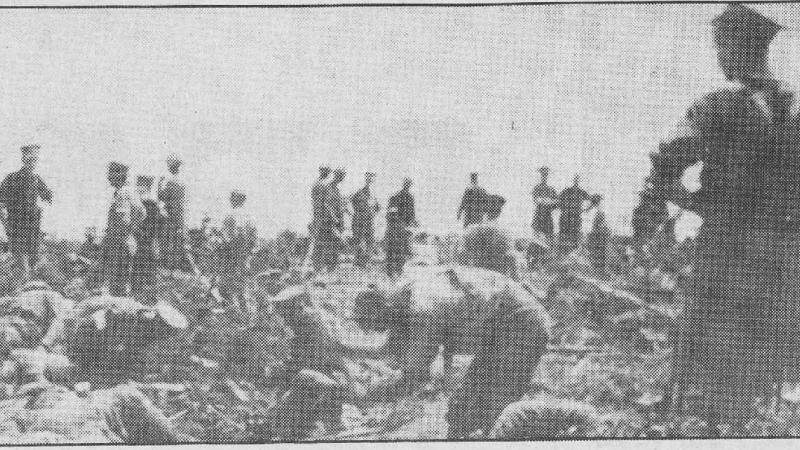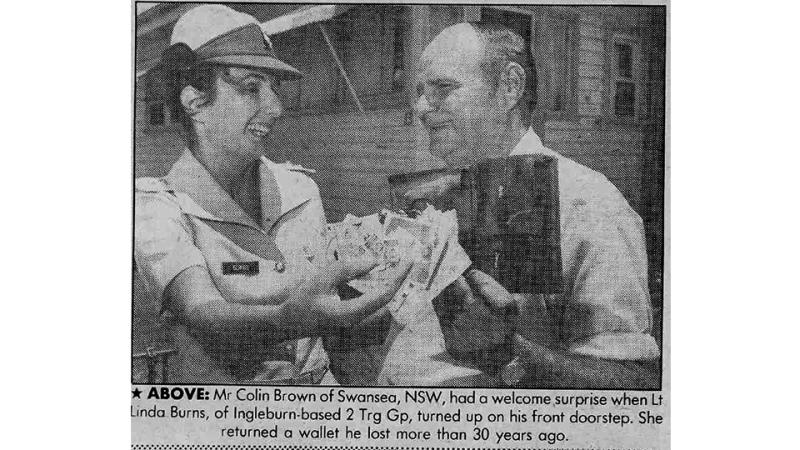28 August 2025
Blaring bugle sounds and reading stories of Australia’s fallen is nothing new for Signaller Ashlee Chivers.
Having participated in nine Last Post ceremonies at the Australian War Memorial, she feels the weight of the moment each time.
“It’s a meaningful way to connect with our history and reflect on the cost of our freedoms,” Signaller Chivers said.
“It’s incredible how unique every story is.”
With more than 103,000 individuals on the Roll of Honour, Signaller Chivers has been told it will take almost 300 years to tell every story on the list.
But late last year, things turned personal.
While helping her grandfather with a family history book, one name caught her eye: Sergeant Henry James Chivers.
He was on the Roll of Honour.
“I hadn't known we had anyone in the family that had served,” Signaller Chivers said.
Named Henry but known as ‘Harry’, he was Signaller Chivers’ great-grandfather’s cousin.
A historian from the memorial pieced his story together from the National Archives before Signaller Chivers read it during a Last Post ceremony on July 12.
Harry was born in Chiverton, near Cowra. He worked on his family property and joined the militia’s 9th Light Horse Regiment (NSW Mounted Rifles).
When WW1 started, he went to Sydney and joined the 1st Australian Light Horse Regiment, then sailed with the first convoy of Anzac troops bound for Egypt in October 1914.
At first the Light Horse weren’t deemed suitable for Gallipoli, but in mid-May 1915, they landed on the peninsula as reinforcements without their mounts.
Within a week, Harry sustained a slight wound to his face but stayed in action.
'It was really meaningful to see them all doing that; it did hit home.'
After the Gallipoli evacuation, he was promoted first to lance corporal, then corporal.
Throughout 1916, his regiment defended the Suez Canal, turning back a major Ottoman advance in August.
By the end of the year, he was a sergeant taking part in the captures of Magdhaba and Rafa. In 1917 Harry alternated between frontline service and instructional courses in Cairo.
He qualified as an instructor and was soon running machine gun training for his unit.
He took part in the legendary Beersheba campaign in October, but by December, was evacuated to Egypt, with arthritis in his right knee.
He returned to his unit in March 1918, but a month later, during a skirmish on April 26, he was wounded by grenade fragments in his right leg.
After four months of recovery in Egypt, he rejoined his regiment, just as the war was entering its final phase.
Just before the Ottoman surrender in October, Sergeant Chivers was evacuated with acute endocarditis – an infection of the heart lining.
He died on December 11, 1918, aged 26, and was buried in the Port Said War Memorial Cemetery in Egypt.
Under the soft lights of the Australian War Memorial’s courtyard, Signaller Chivers read the story of her lost relative.
Watching from the crowd were her grandfather and his brother, along with about 23 other family and friends.
As they laid wreaths beside the Pool of Reflection, the century-long gap between generations of the Chivers family seemed to disappear.
“It was really meaningful to see them all doing that; it did hit home,” Signaller Chivers said.
For one evening, Sergeant Harry Chivers wasn’t just a name on the Roll of Honour.
He was a son, a cousin and a soldier, whose story was finally told by his family.


